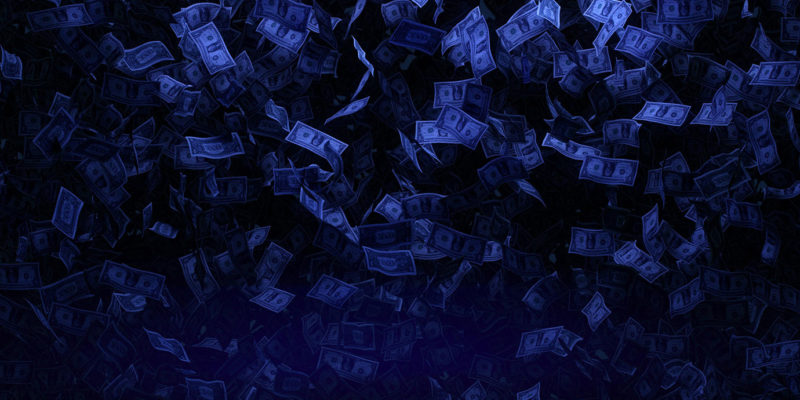
Ryan McMaken (RM): There is a lot of talk these days about the US losing its global monetary hegemony. But a lot needs to happen in terms of unwinding the present system before that can happen. At the heart of this seems to be what you call “globalized money without a global money.” What do you mean by that, and what does it have to do with the dollar’s global importance?
Brendan Brown (BB): Globalization of money under the fiat regime magnifies and extends national monetary power. The currency of the largest economy, so long as it is freely tradable and meets minimally sufficient standards as a store of value, becomes the dominant international money. Dominance brings hegemony. Smaller countries in defying the lead of the dominant money, whether by choosing an alternative type of monetary regime or simply pursuing a different type of monetary policy, become subject to severe economic stress.
This is all quite different from in a world of gold monies. There, all countries in the gold bloc have a common monetary base consisting of above-ground supplies of gold bullion and coin. One national brand of gold money can become dominant—but this will depend less (than for fiat money) on the criterion of economic size (though this still counts) and more on whether there is trust in the given country keeping to the rules of the gold standard. Hence in the years 1880–1914 the pound remained the number one global money even though Britain had been overtaken as an economic power by first the US and then Germany.
RM: One important factor in this that is rarely understood is how monetary inflation with the dollar can spread inflation in other countries as well. How does this work?
BB: In principle, where currencies are freely floating, each country can choose its own monetary path. Foreign countries are not tied (as under a fixed exchange rate system built around the dollar) to inflationary US monetary policy. At best the given foreign country’s monetary system has a solid anchor attached to a well-functioning monetary base whose supply is independent of US influence.
In fact, we are now in a world with no such anchor anywhere. Instead, independence refers to interest rate policy, whose potential outcomes are largely unknown except by those who pretend to know the neutral rate level. In any event, defiance of US monetary policy, whether achieved ideally, via monetary base control, or by interest rate policy implementation, means potential sharp currency appreciation. This would result in losses for politically powerful economic groups in the traded goods and services sector of the economy. Moreover, money which boasted of intrinsic superiority (in terms of quality) to the dollar could become subject to large fluctuations in global demand as a haven. Individuals (in the defiant country) would still hold the domestic money in some combination with dollars to reduce their exposure to a sudden fall in [their currency’s] international purchasing power if and when the dollar rebounds. Hence, they have direct exposure to US inflation risk. In any case, the defiant country would still be subject to asset inflation spread by the US. Yield-hungry, “maddened” dollar-based investors influence the behavior of asset markets even in sound money countries—as for example equity sectors enjoying speculative narratives or sometimes a speculative bubble in their currencies.
RM: You’ve also noted, however, that the dollar is not the only player here. Other currencies are important too. Moreover, the central banks of key currencies can also “make life more difficult” for other countries. Why is this?
BB: The worse the monetary quality of the dollar, the more likely in principle it is that a foreign country would be defiant at considerable cost to US monetary hegemony. Hence in the 1970s Germany pursued an independent monetary course, seeking to shelter itself from the greatest US peacetime inflation. The Bundesbank developed and implemented a practical monetarist agenda in cooperation with a Social Democrat–liberal government which won elections on the promise of defying US inflation and thereby benefiting the middle classes. Germany became the regional monetary hegemon. Similar monetary policies in several neighboring countries meant a dampening of the deutsche mark’s potential effective exchange-rate volatility. The spectacular fall of the dollar against the deutsche mark in the crisis of 1978 helps explain the Carter administration’s bringing in Paul Volcker to head the Fed and implement the “monetarist experiment.” This turned out to be brief, and in the next US episode of monetary inflation (1985–1988/89) German defiance of the dollar hegemon finally crumbled amidst emerging flaws in Bundesbank monetarism. In a changed political climate less tolerant of sharp deutsche mark appreciation, Germany joined the euro train. There was no European or Japanese defiance of the US monetary inflation episodes of 1996–2005 or of 2013–22. Asset inflation—the chief simple manifestation of monetary inflation up until the pandemic—does not excite political reactions like high goods inflation. When this erupted in 2021–22 on both sides of the Atlantic, European central bankers and governments could not plausibly blame US hegemony, given they had been administering similar policies to Washington with enthusiasm and vigor.
RM: It seems there are many downsides to this system, yet it has persisted for a long time. Perhaps one of the best questions you ask in the book is what keeps a bad system in power. How does politics keep this system afloat?
BB: Big government, big finance, Big Tech gain much from the actual bad monetary system. The gains take the forms respectively of vast, partly camouflaged taxation; privileges and profits buoyed by asset inflation; and sky-high valuations nourished by speculative narratives about the Eldorado of endless monopoly rents. Hence in the political arena, the monetary status quo enjoys defense and attack lines fortified by crony capitalism. Reformers have not succeeded in breaking through these. Failure is due in part to monetary inflation under the present regime having shown up (until the pandemic) as asset inflation, with goods inflation largely camouflaged.
There are, however, also serious lessons which transcend the wheel of fortune. A winning message of reform, such as would emanate from a vision based on theory and application, and which reformers could deliver in response to the cheap shots of the status quo’s propagandists, has been missing. Reformers have a challenging task to persuade opinion on the basis of counterfactuals and a laboratory of history, which by its nature cannot deliver verdicts of “beyond reasonable doubt.”
Anchoring an unanchored monetary system is likely to be costly at the start. The reformers would surely gain from generating excitement about the new world in which sound money will have an integral part—joining their cause to the benefits of competitive capitalism. The reformers should aim also at undermining the status quo’s efforts to find scapegoats for crisis and societal damage as these erupt or emerge.
RM: As banks fail or the economy looks unstable, we hear repeated calls for more government regulation. But isn’t a lot of this instability caused by the monetary policy of the central banks, who are also supposedly in charge of stabilizing things? Will new regulations solve the problem?
BB: A vicious circle starts with monetary inflation. The bust phase of asset inflation follows, during which banking crisis often erupts. The regime finds its scapegoats—risky, irresponsible practices in the banking and broader financial industries motivated by greed, coupled with a giant savings surplus, which overwhelms the equilibrating mechanisms of a capitalist economy. New safety devices (deposit insurance, enhanced lender of last resort, minimal and multiple capital ratios) to prevent the eruption of future banking crises undermine further the monetary anchoring system previously in place (by diluting the “super-money” qualities of the monetary base, meaning that the demand for this is no longer strong and broad when not interest-bearing as essential to solid anchoring). Hence the danger increases of further monetary inflation episodes even harsher than the last one; the warnings about oversaving and long, sustained periods of recession, in which automatic recovery mechanisms are too weak to bring recovery, justify the authorities’ being ever ready to take “bold preemptive action” against any threatened downturn. Hence super-long cycles become the norm, but eventually these are broken by great recessions, when accumulated malinvestment and financial fragility just become too great. Safety brakes may eventually become so powerful as to mean violent banking crises no longer occur, severe asset inflations notwithstanding; that would be symptomatic of a mutation of capitalism into a China-style economic and financial system.
RM: It seems that if the dollar is weakened, this will primarily be the fault of the US central bank itself. Couldn’t the central bank take unilateral steps to strengthen its own currency? What are the benefits of a stronger currency?
BB: The implementation of a weak-dollar policy, whether declared or not, always involves the Federal Reserve’s pursuing monetary inflation. Counterfactually, an independent Fed which refused to shift policy in that direction could frustrate the aim of devaluation. That has never happened and is implausible in any gaming of possible outcomes taking account of likely shared perspectives and power relationships between Congress, the administration, and the central bank. In all episodes of dollar devaluation—Nixon-Burns (1968–72), Reagan-Volcker (1985–87), Clinton-Greenspan (1993–96), [George W.] Bush-Greenspan (2003–5), Obama- Bernanke (2009)—the accompanying inflationary monetary policy has wrought, eventually, economic destruction in the US and abroad which has been mutually reinforcing. Before that phase of destruction, the initial monetary stimulus and devaluation has gone along with a win in the first election for the president or his party. A strong-dollar policy, by contrast, means the Fed pursuing sound money and the administration/Congress renouncing devaluation. Then most other countries, small and large, would follow the US in following sound monetary principles: the dollar exchange rate would often be a key part of the anchoring system for their currency. These countries no longer would incur the costs of potential high exchange rate volatility, including sharp appreciations in consequence of their hard-money choice. The world, including the US, would be a safer and more prosperous place under the strong dollar than under a weak dollar.
RM: As a final question, it seems we should address the overall theme of the book, which is about returning to “good money.” What are the most basic tenets of good money?
BB: Good money is an excellent store of value and medium of exchange. As such, at the level of society money does not “get out of control and become the monkey wrench in all the other machinery of the economy” (to quote J.S. Mill). Good money, whether fiat or gold, has at its base a set of assets characterized by extreme moneyness and reflecting “super-money” qualities.
These assets enjoy a broad and strong demand even though they pay no interest. Constitutional rules (for fiat money) or geology and mining technology (for gold money) keep the monetary base scarce. Over the long run the supply of the monetary base grows at a very slow pace. Interest rates both short and long are freely determined without any official interventions.








